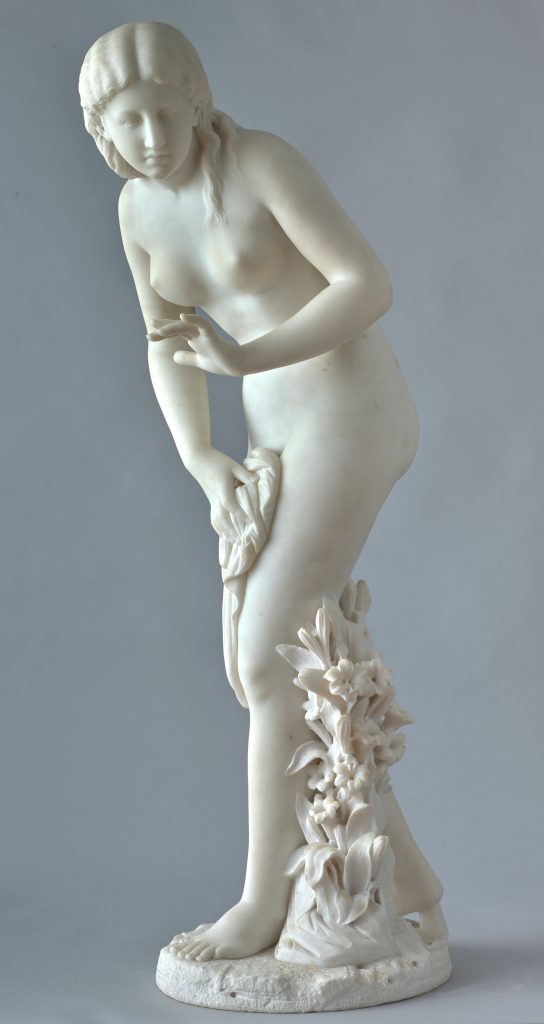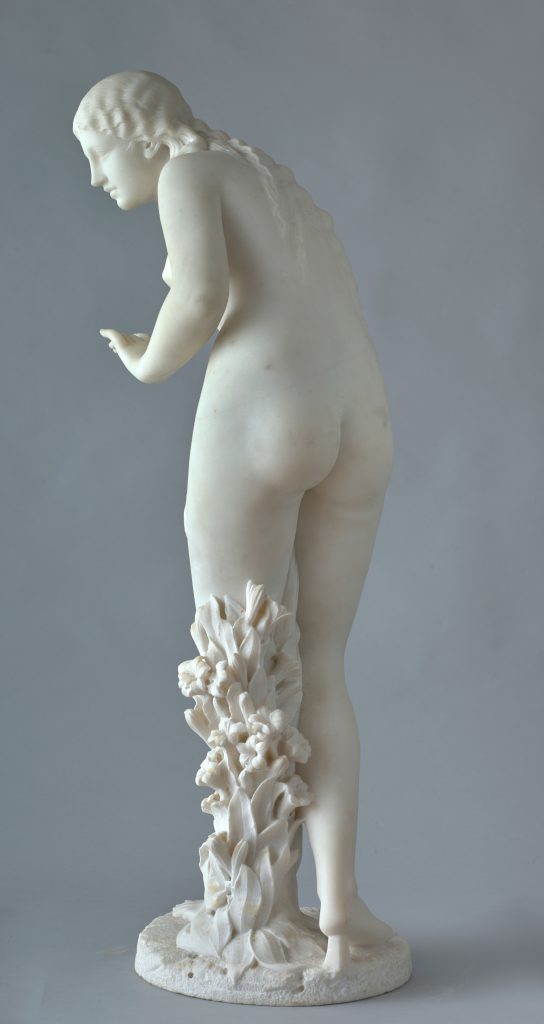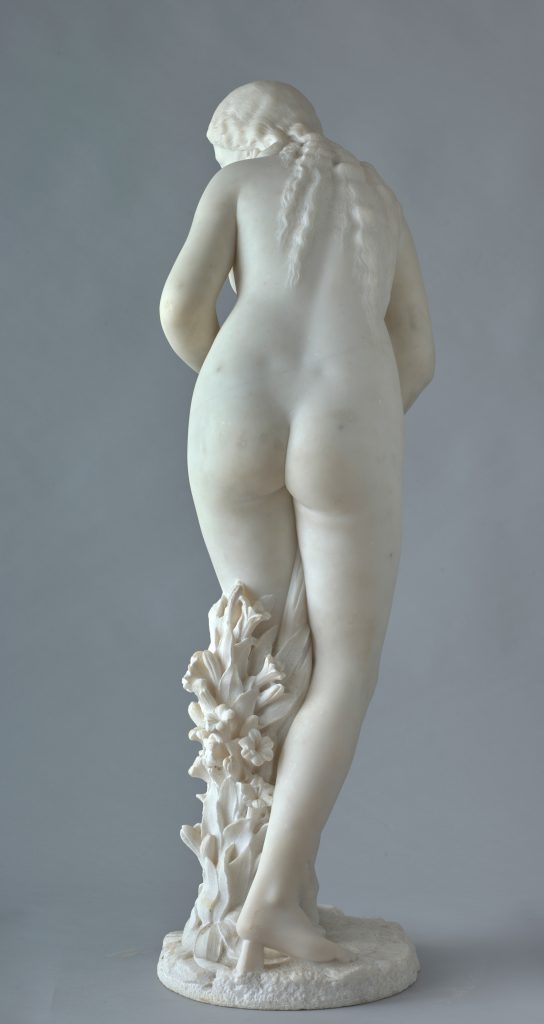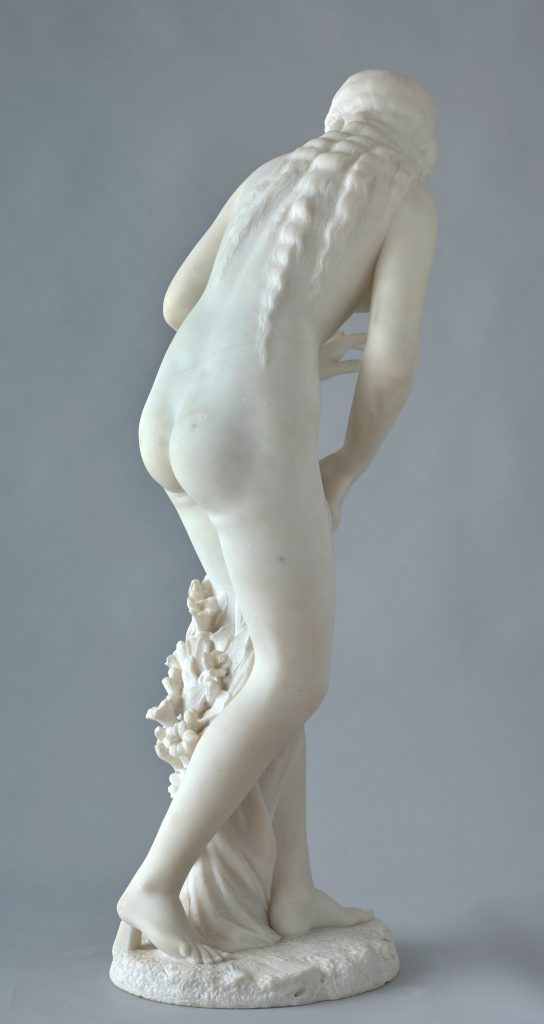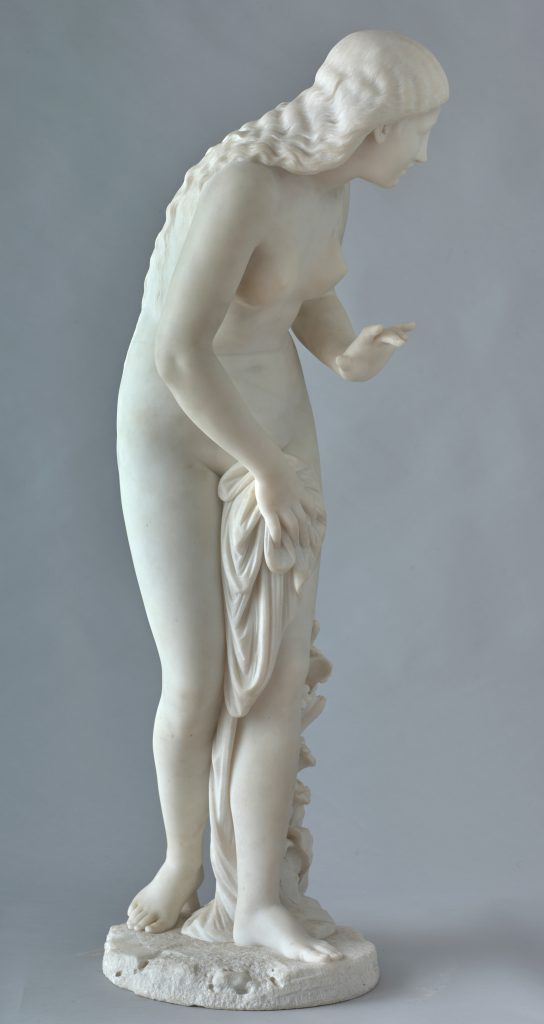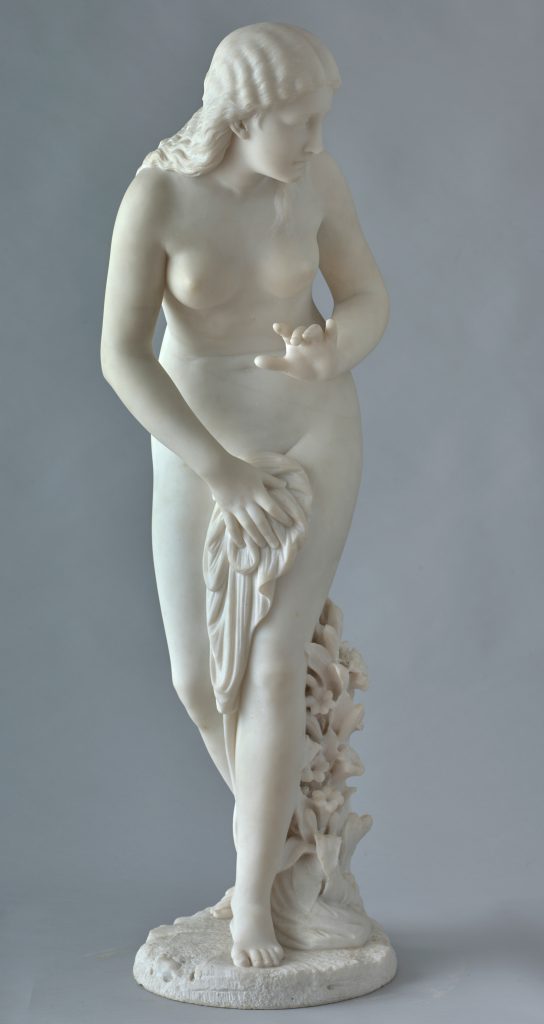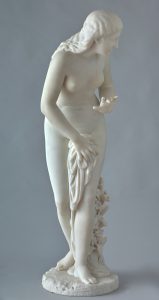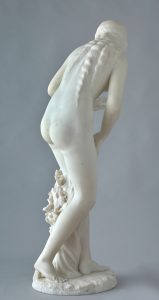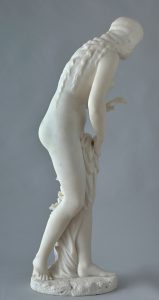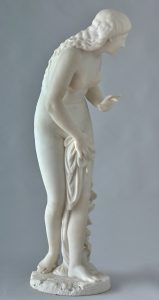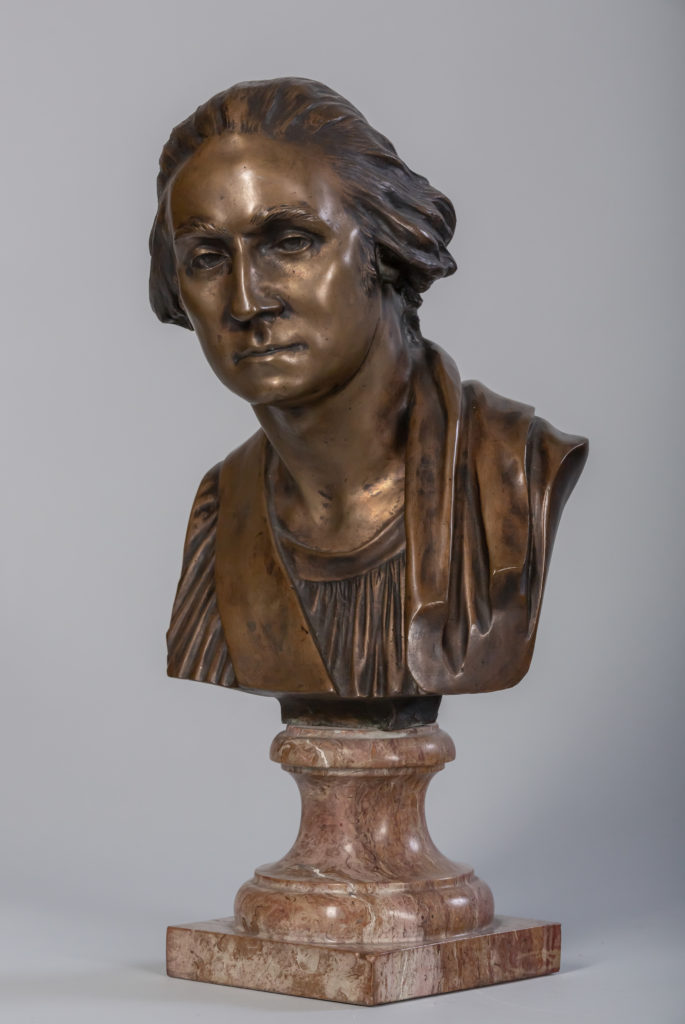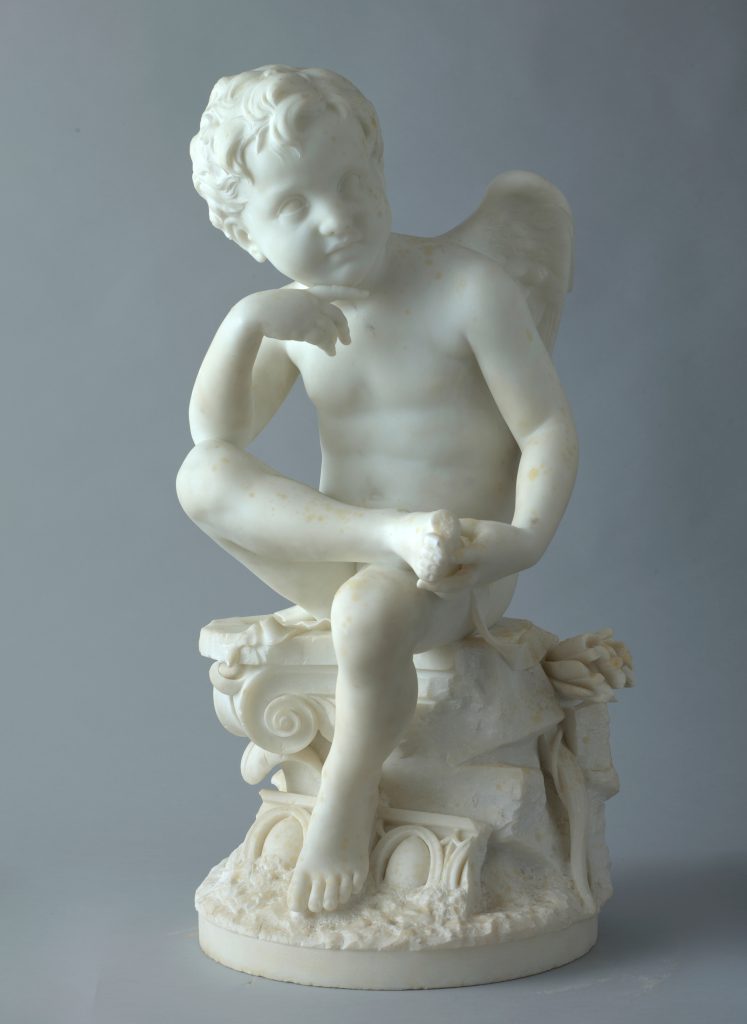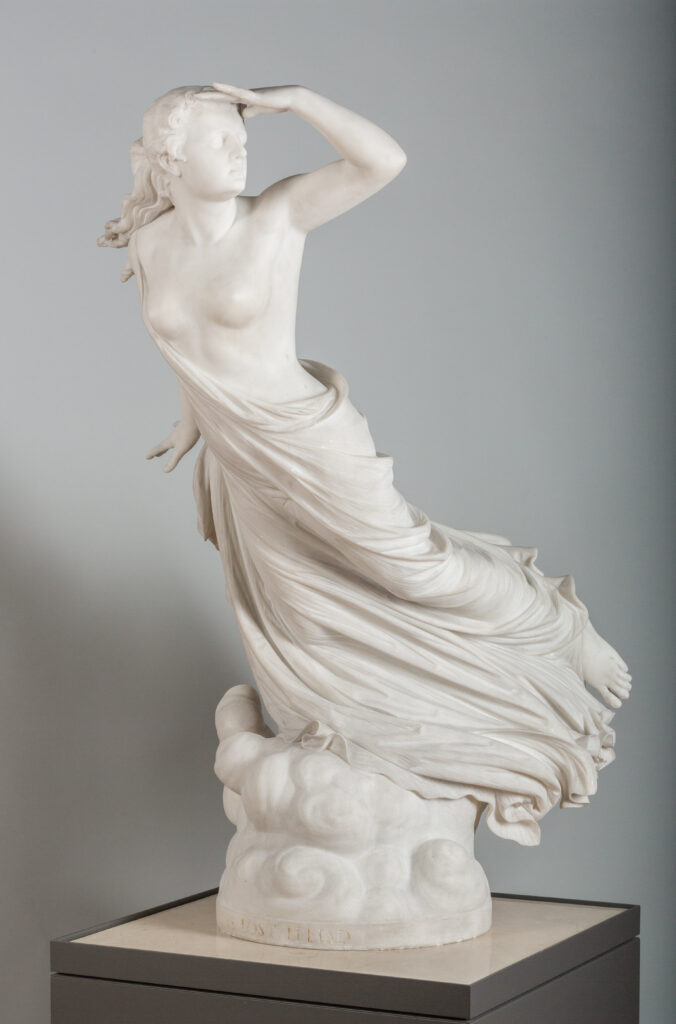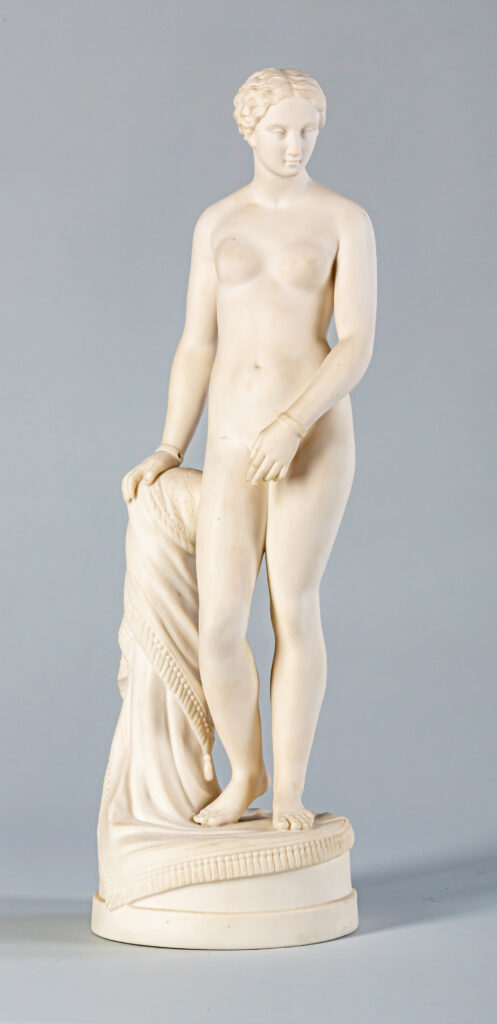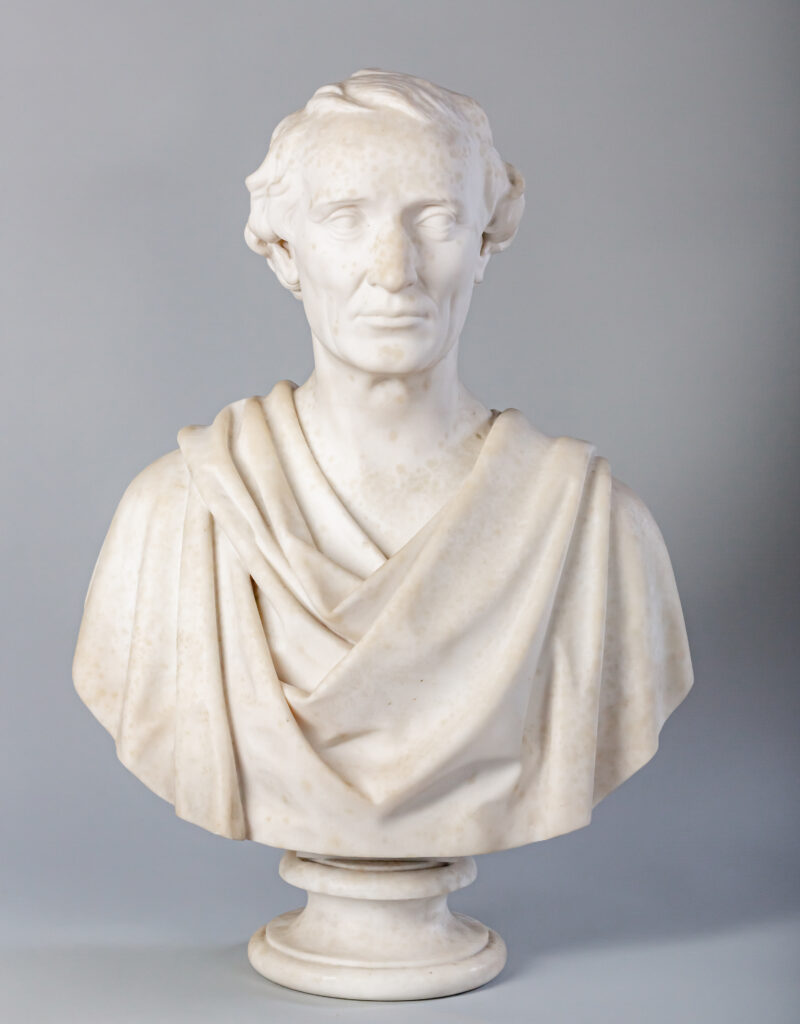Musidora
Gift of Professor Margaret Jackson, in memory of her father, the sculptor
1916.10John Adams Jackson’s sculpture Musidora illustrates the close connections between American classicism and its European roots. Based on the poem Summer (1727) by the British author James Thomson (1700–1748), the sculpture depicts Musidora, a young woman surprised as she bathes in the river. The motif of the woman surprised at her bath has a long history in ancient myth, which found expression in tales, like that of Diana and Actaeon, and ancient sculptures, especially those of the goddess Aphrodite (Venus in Latin), such as the Aphrodite of Cnidus and the Venus de Medici.
Both Thomson’s poem and Jackson’s sculpture are indebted to these ancient models but adapt them to their modern context. In Thomson’s poem Summer, which is imbued with ancient references and Latin language, Musidora’s male onlooker averts his gaze and retreats out of respect for her modesty, offering an example of virtue updated for modern sensibilities and in contrast with many ancient examples. In the case of Randolph’s Musidora, the classicizing subject is rendered with a greater degree of naturalism that was current in the latter half of the nineteenth century. During this period, while classical subjects remained popular, the formal neoclassicism that marked much art of the late eighteenth and early nineteenth century gave way to more naturalism in the works of European artists such as Jean-Baptiste Carpeaux and Lorenzo Bartolini, as well as Americans like Thomas Cole, Elihu Vedder, and John Adams Jackson.
John Adams Jackson was born in Bath, Maine, and began his career as a sculptor in Boston, while apprenticing as a machinist. There, Jackson made a number of portrait busts of prominent Americans before departing to Europe in 1853 to continue his training. He studied in Florence and Paris, where he would have encountered ancient sculptures and the continued influence of classicism in the arts. After a brief return to New York, he settled permanently in Florence in 1860 and increasingly turned his attention to ideal sculptures like Musidora.


